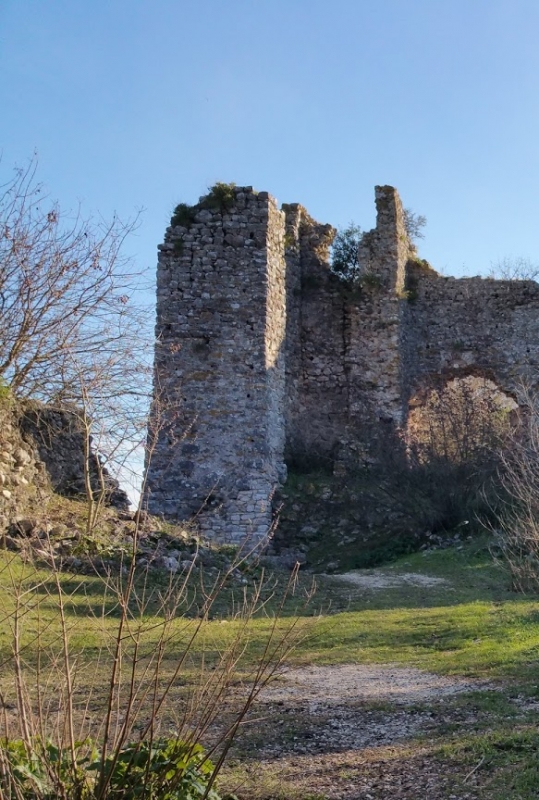The castle of Rogoi stands on the ruins of the ancient port of Bouchetion, founded in the 7th century BCE. Around 500 CE the shoreline began to move south as the river silted its delta. The Louros, which was navigable for the small ancient vessels, continued to flow through the developing swamp, but at some point in the medieval period the Byzantines decided to restore the fortifications that had been destroyed by the Romans, when they conquered Epirus in 167 BCE. In order to improve the defences, maintain access to the sea, and drain the marshes, the Byzantines artificially diverted the river to flow north, beneath the castle, and then west and south to the sea.
10. Castle of Rogoi | Vouchetion
The castle of Rogoi rises like a dream from an overgrown hill. It is a bit of a hike but the almost incredible story of the Byzantines and the river is an adequate compensation for your efforts.
Stories
Moving the river
The Devil and the wild beasts
The acropolis of Bouchetion occupied the flat area on the top of the hill. The Byzantines used the fine masonry of the ancient wall as a foundation and raised their castle using tiles and rough rubble masonry. Most of the walls are overgrown and the castle’s interior is ruined.The only surviving structure is the 15th century church of the Assumption of the Virgin Mary, where the remains of St. Luke the Evangelist were secreted after the Franks conquered Constantinople in 1204. As you enter the church you come face to face with the angels striking the Devil, who is accompanied by wild beasts (bears and wolves) and shepherds the hapless souls of those condemned to eternal damnation.
The three caballeros
The most famous locals are the three soldiers who participated in a campaign, alongside the Romans, against the band of revolutionaries who tried to win the throne of the kingdom of Pergamon in Asia Minor in 129 BCE. They joined the Romans with their chariots, a most expensive weapon available only to the wealthiest elites who had demonstrated their loyalty to Rome. Their names (Philotas, Ipparchos, Kylisos) are preserved for all eternity thanks to the dedication of a bronze statue to Hercules the Saviour. The men also boast that they are descendants of Oxylus, the one-eyed man from Aetolia who assisted the Dorians to conquer the Peloponnese. He was rewarded with the land of Elis, whence came the first settlers of the land of Rogoi.
Powered by Clio Muse Tours
